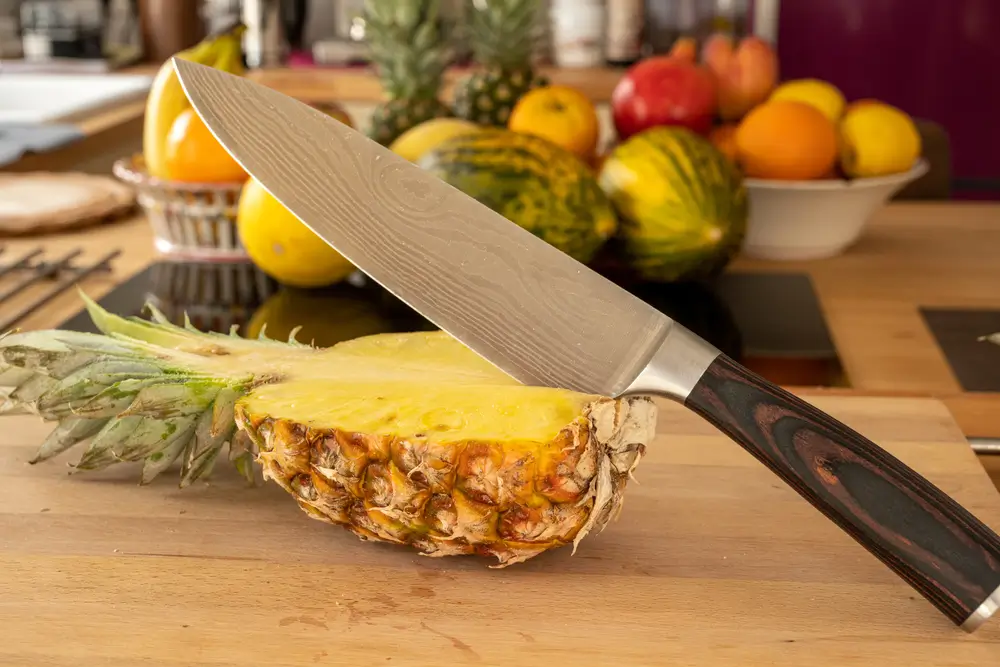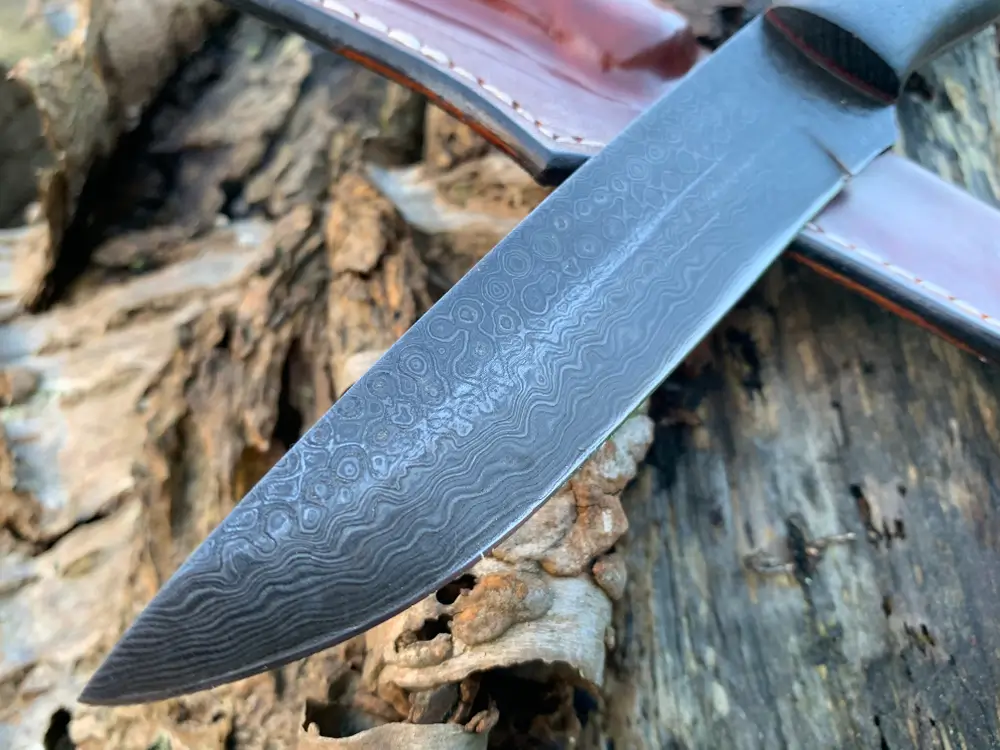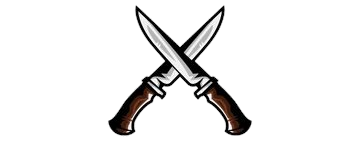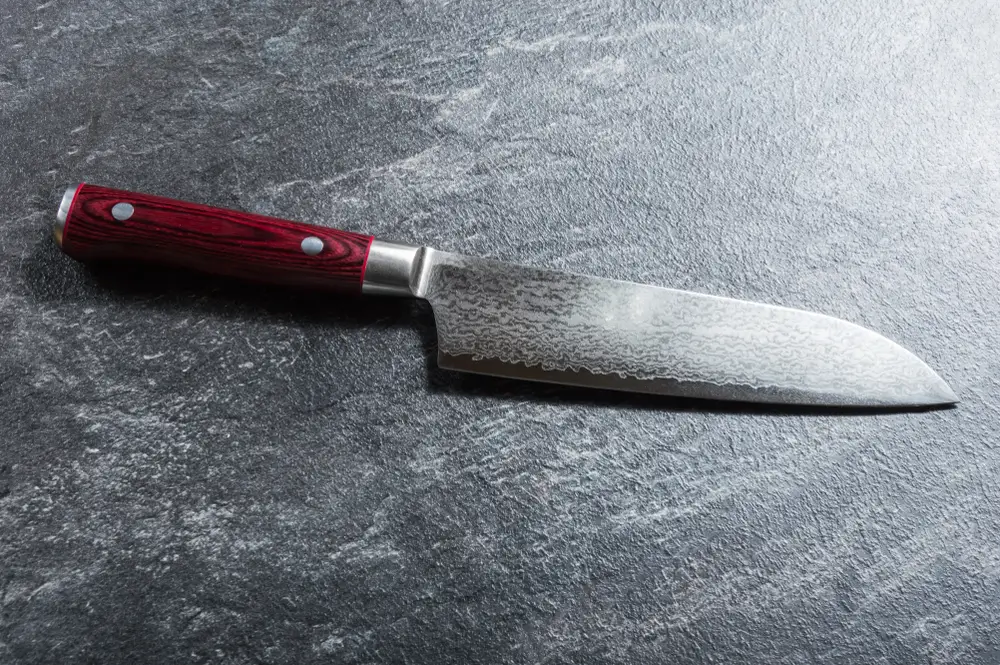You’re at your local knife shop, pricing out new blades. The selection is incredible and includes all shapes, sizes, and colors of knives. But then you see it. The knife of your dreams. It’s got a beautiful Damascus steel blade. “That’s the one,” you say to yourself. You quickly reach for your wallet, but not before taking a second look at the knife. Something’s not quite right. The blade seems… off somehow. Could it be a fake? How to tell if my Damascus knife is real? With this guide, of course!
Damascus steel knives are prized for their beauty and durability. If you’re looking to buy a Damascus knife, it’s important to know how to tell if it’s real. Unfortunately, there are many fake Damascus knives on the market. In this article, we’ll teach you 7 ways how to spot a fake Damascus knife.
7 Ways How to Tell If my Damascus Knife is Real or Fake?

It’s not just online stores that are selling fake Damascus knives – brick-and-mortar stores are getting in on the action, too. Here are some tips on how to spot a fake Damascus knife:
1. Check the Pattern
A genuine Damascus steel blade will have a distinctive and consistent pattern running through it. This is because the pattern is created during the forging process, and is an integral part of the blade itself. If the pattern on the blade you’re looking at seems to be printed or engraved on the surface of the metal, it’s probably a fake.
2. Look for Water Marks
Another way to tell if a Damascus steel blade is real or not is by looking for watermarks. These marks are usually left behind during the acid-etching process which gives Damascus its distinctive look. However, they can also be left behind by less savory methods, such as using battery acid or other corrosive chemicals to etch the blade after it has been completed. If you see any suspicious-looking marks on the blade, it’s best to err on the side of caution and assume it’s a fake.
3. Inspect the Edge
The edge of a genuine Damascus steel blade will be extremely sharp and resistant to chipping or breaking. This is because Damascus steel is incredibly strong and durable. If the edge of the blade you’re inspecting seems dull or brittle, it’s probably not real Damascus steel.
4. Look for Inclusions
Inclusions are another way to spot a fake Damascus blade. Inclusions are small imperfections in the metal that can be seen with the naked eye. Real Damascus blades will have inclusions, while fake Damascus blades will not. So, if you see a Damascus blade without any inclusions, it’s likely that it’s not made of real Damascus steel.
5. Check for Forging Marks
Forging marks are another way to spot a fake Damascus blade. Forging marks are small indentations or scratches on the surface of the metal that are caused by the forging process. Real Damascus blades will have forging marks, while fake Damascus blades will not. So, if you see a Damascus blade without any forging marks, it’s likely that it’s not made of real Damascus steel.
6. Inspect the Bolster
The bolster is another way to spot a fake Damascus blade. The bolster is the part of the knife where the blade meets the handle. On real Damascus blades, the bolster will be made of brass or copper, while on fake knives, the bolster will be made of stainless steel or aluminum. So, if you see a knife with a stainless steel or aluminum bolster, it’s likely that it’s not made of real Damascus steel
7. The Price is Too Good to Be True
If you see a “deal” on a Damascus knife that seems too good to be true, it probably is! Remember, this type of steel is expensive and time-consuming to produce—so if you see a knife that’s advertised as being made from Damascus steel but it’s priced far below market value, chances are it’s not the real thing.
Of course, these aren’t foolproof ways to spot fake Damascus—but they’re all red flags that should make you pause before hitting “buy.”
Why are There So Many Fakes?

The popularity of Damascus steel means that there’s a lot of demand for it—but the production process is time-consuming and expensive. As a result, there are a lot of manufacturers who are looking to cut corners and make fake Damascus blades. These blades might look similar to the real thing, but they won’t stand up to use and wear in the same way. Plus, if you’re paying top dollar for a knife made with genuine Damascus steel, you should be getting the real thing.
Conclusion
With so many fake Damascus knives on the market, how can you be sure that you’re getting the real thing? Here are seven tips to help you on how to spot a fake Damascus knife. With these tips in mind, you should be able to spot a fake Damascus steel knife from a mile away! Remember, if something seems too good to be true, it probably is! So, always inspect your knife for inclusions, patterns, edges, forging marks, and other telltale signs of authenticity before purchasing.

